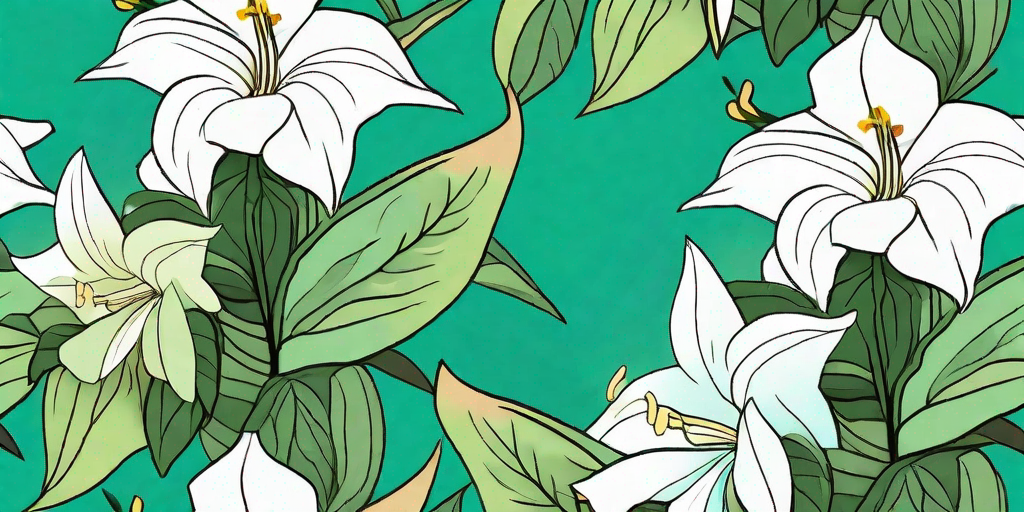
If you're a green thumb looking for a new floral marvel to add to your garden, or a beginner gardener seeking a low-maintenance yet stunning plant, allow us to introduce you to the Dipladenia. This tropical beauty, also known as Mandevilla, is a vine-like plant that boasts vibrant, trumpet-shaped flowers and glossy green leaves. It's a showstopper, a conversation starter, and a bee magnet all rolled into one.
A Brief Introduction to Dipladenia
Originating from South America, Dipladenia is a genus of flowering plants in the family Apocynaceae. It's a perennial plant, meaning it can live for more than two years, adding a dash of color to your garden season after season. The flowers, typically red, pink, or white, are the real stars of the show here. They're large, trumpet-shaped, and have a certain tropical charm that's hard to resist.
But don't let the exotic looks fool you. Dipladenia is surprisingly easy to care for. It's drought-tolerant, can thrive in various soil types, and doesn't require constant pruning. In other words, it's the perfect plant for both gardening veterans and rookies.
How to Grow and Care for Dipladenia
Now that you're hopefully sold on the idea of adding Dipladenia to your garden, let's get down to the nitty-gritty: how to grow and care for this floral marvel.
Planting Dipladenia
First things first, Dipladenia loves the sun. So, choose a spot in your garden that gets at least six hours of sunlight each day. As for the soil, it should be well-draining. Dipladenia isn't a fan of waterlogged roots. If you're planting it in a pot, make sure the pot has drainage holes.
When it comes to planting, dig a hole twice as wide and just as deep as the root ball. Place the plant in the hole, making sure the top of the root ball is level with the soil surface. Backfill the hole with soil, firm it gently, and water thoroughly.
Caring for Dipladenia
Once your Dipladenia is happily settled in its new home, it's time to think about ongoing care. Watering is crucial. While Dipladenia is drought-tolerant, it doesn't mean it can survive without water. Water your plant regularly, but allow the soil to dry out between waterings.
As for feeding, a slow-release fertilizer applied in early spring should do the trick. Pruning isn't necessary, but you can do it to maintain a certain shape or size. Just remember to prune after flowering to avoid cutting off future blooms.
Common Problems and Solutions
Despite its easy-going nature, Dipladenia can sometimes face a few problems. But don't worry, we've got the solutions.
Yellowing Leaves
If you notice the leaves of your Dipladenia turning yellow, it could be due to overwatering or poor drainage. Cut back on watering and ensure the plant isn't sitting in water.
Another reason could be a nutrient deficiency. In this case, applying a balanced fertilizer should help.
Pests
Dipladenia can occasionally attract pests like aphids and spider mites. If you notice small bugs on your plant or a sticky residue on the leaves, it's time to take action. You can use a mild insecticidal soap or a strong blast of water to get rid of these pests.
FAQs
- Is Dipladenia toxic to pets?
Yes, Dipladenia is toxic to pets. If ingested, it can cause vomiting, diarrhea, and other symptoms. So, it's best to keep it out of reach of your furry friends.
- Can Dipladenia survive winter?
Dipladenia is a tropical plant and doesn't handle frost well. If you live in a region with harsh winters, it's best to grow Dipladenia in a pot and bring it indoors during the colder months.
- How often does Dipladenia bloom?
With proper care, Dipladenia can bloom from spring to fall, providing you with a long-lasting display of vibrant flowers.
Conclusion
There you have it, a comprehensive guide to unleashing the beauty of Dipladenia in your garden. This floral marvel is more than just a pretty face. It's a resilient, low-maintenance plant that can add a tropical touch to any garden.
So, what are you waiting for? It's time to roll up your sleeves, get your hands dirty, and welcome Dipladenia into your garden. Happy gardening!















